September 29 - October 27, 2024: Issue 635
a Walk on the Duffy's Wharf Track
Photos by Kevin Murray and Joe Mills
A fabulous walk on the Duffy's Wharf Track, Ku Ring Gai Chase NP, on Thursday October 10 10 2004, with friends Joe and Julie.
Kevin Murray
Duffys Forest
Peter Joseph Duffy (1814-78) was the son of district constable Patrick Duffy who sailed into Sydney on the ship Eliza in 1822, with his wife Bridget (nee Conlon) and their four children. Patrick received a grant of 100 acre (40.5 hectares) in the Parramatta-Pennant Hills area, a portion of which he cleared and established as an orchard.
Peter Joseph, the second son, toiled as an orchardist and is listed, together with his younger brother Patrick Michael, as a signatory of the 1851 fruitgrowers' petition.
He was, however. also a sawyer and it was to him, and not as previously thought to his father Patrick, that the 100 acres of what became known as Duffys Forest was granted in 1857. The father, Patrick, had died in 1854 at the age of 68 and is buried in St. Patrick's Cemetery in North Parramatta.
Peter Duffy and his associates, following Larmer's track to Cowan Waters, built a wharf of stone and timber, widened the road and commenced felling the trees. Some were slid down the steep ridges and into the water to be loaded on to the barges, some were hauled down by bullock teams and almost overnight, the gentle forest was a hive of activity.
The men did not live there permanently but remained in the bush for months at a time - some took their families 6 with them - living in makeshift huts, some of wattle and daub with stringy-bark and slab roofs, others with sapling and hessian walls sealed with manure. All lived under the most primitive conditions but with plenty of fresh running water from the creeks or springs, and fish or game for the pot. The remains of the old wharf, built on an Aboriginal midden, are still there, partly submerged but still visible about one kilometre up Cowan Creek from Bobbin Head in an inlet known as Sledgehammer because of its shape.
Duffy's track became Booralie Road and the road to the old wharf is now a fire trail. The remains of an old wooden fence just above the old wharf are believed by some old timers to be part of Duffy' s boundary, others say it was a fence to keep in the bullocks and horses or the deer, pigs and goats that may have provided 'tucker' for the hungry timbergetters, but the late Bill Reely of Turramurra said, in 1982, it was definitely known as 'Corner Post' and part of Oliver Bourke's fence, used by him in the late 1800s. Part of this fence was later used by the park rangers to enclose grey kangaroos in a bid to introduce them into the Chase. Not indigenous, and used to plains, the rough terrain, however, was unsuitable and the died out.
Extract from and much much more in: The Story of Terrey Hills and Duffys Forest 1805-1988 by Gay Halstead. Commissioned by Australian Geographic and published in the Bicentenary year of 1988 by Nungurner Press Pty Ltd Copyright©1988 G. E. Halstead ISBN O 9593401 1 4 Printed in Australia by Macarthur Press Sales Pty Limited. Available at: https://dicksmithadventure.com.au/wp-content/uploads/2018/06/The-Story-of-Terrey-Hills-Duffys-Forest_Book.pdf

Duffy's Wharf on Cowan Creek, circa 1900. Photo: by Kerry, courtesy NSW State Records and Archives, Item; FL3592733

Cumberland Colah South - No. [Number]1 Proposed measurement of Patrick Duffy's land (100a [acres]). No.[Number] 2 proposed measurement of Mr Milson's (250ac [acres]). [Sketch book 1 folio 22]. Courtesy NSW Records and Archives, Item; FL208183
The first settler was Peter Joseph Duffy who was granted 100 acres (60 hectares) in 1857. He was an orchardist but immediately set about felling trees, the timber to be sold in Sydney Town . He created a bullock track down to Cowan Water and there established a wharf, whose remnants are still there. The timber was loaded onto a barge which was used to convey the timber, both up the Hawkesbury and with greater difficulty around to Sydney Harbour. Duffys Forest was still a very remote place, requiring a trip of over 100 kilometres by horse and cart, via Parramatta to the growing Sydney town. Other small grants were made over this time, but the population was less than 100 people. Timber workers came to provide labour for the endeavours of the Duffy family, but accommodation was rough. This period took us through to 1890 and the economic depression.
1894 saw the declaration of the Ku-ring-gai National Park, which eventually faced Duffys Forest on three sides. The period from 1890 through to the end of WW1 saw a degree of development of orchards and small farmlets. There was the conditional sale of land by the NSW Government in 1907, involving minimum lots of 2 hectares. The general public were becoming much more aware of the beauty of Australian wildflowers and for a number of years there was a Wildflower Show in Manly at this time, until it was realised that wildflowers were rapidly disappearing and some controls were introduced.
With the end of WW1, soldier settlements were introduced both at Forestville and Duffys Forest. Unfortunately, this was not a success due to the returned servicemen not having enough capital to develop their lots and also lacking expertise. Many ex-servicemen walked off their lots. The population was still not much more than 100 people.
The whole area of Duffys Forest and Terrey Hills was still known at this time as Duffys Forest.
In 1924, both the Spit Bridge and Roseville Bridge were opened at this time and private and commercial vehicles were being seen but not in great numbers. A bus service was started from St Ives arranged by Jimmy Maunder on what was known as Lane Cove Road, which previously had been known as Pittwater Road and eventually became Mona Vale Road.
The Depression of the 1930s made life hard and there was a transient population of unemployed men who slept rough and had a wash in the surrounding pools off the ridge line. In those days, the water was clear and pure, compared to the sad polluted state of these pools and creeks now. Telephone connections only became available in the 1940s.
The next period started with the end of WW2 and proceeded to the mid 1980s. Increased car ownership meant that more and more people were becoming familiar with the area but roads and streets in the city outskirts, such as Duffys Forest, were only slowly becoming tar sealed. The Sunday afternoon drive was becoming part of suburban family life. Roadside stalls started to appear catering to the suburban tourist. Up to the 1930s, summer bushfires had largely burnt themselves out away from homes but as residential development increased, first Terrey Hills and then Duffys Forest established a volunteer fire service. The bushfires ravaged the area, on average every 5 years. This had a unique impact on Duffys Forest and Terrey Hills in bringing the community together, not only to prepare and fight bush fires but to focus on the provision of a whole range of volunteer services. Both areas have had strong resident’s groups, when other parts of the Northern Beaches no longer have Progress Associations to conduct working bees and lobby local, state and federal government. Electricity eventually came to the area in 1967. The proposal to create an airport at Duffys Forest created a furore from the local residents and a fight after 4 years, which they won. Waratah Park was opened in 1967 and became famous for the television series “ Skippy the Bush Kangaroo “ which ran for 3 years but in people’s memories seemed to run for 20.
From 1985 onwards, there was a general increase in prosperity with a bit of a dip in the early 1990s. The Forest Hills Pony Club started in 1978 but the blossoming of equine recreation in and around Duffys Forest expanded from the 1980s onwards. Bushwalkng still remained popular but mountain biking took off. To such an extent, that in the early 2000s, we saw the President of the USA, George Bush, careering through the forest. The Terrey Hills Golf and Country Club was built accompanied by the Greenway real estate development in the late 1990s. With the general increase in prosperity, we have seen the development of larger houses, complete with swimming pools, tennis courts, horse exercise yards and extensive landscaping.
Extract from THE HISTORY OF DUFFYS FOREST BY JIM BOYCE – from; https://duffysforest.com/history-of-duffys-forest/
Also more in: Roads To Pittwater: The Mona Vale Road
Family History: Patrick Duffy - Mum's side
Duffys Forest is named after Patrick Duffy, who received a land grant there in 1857. He became a timber cutter and cleared a road through the bush to Cowan Creek, where he built a stone wharf for transporting timber. The wharf is still known as Duffys Wharf and the road is Duffys Track.
Duffys Forest is a suburb of northern Sydney, in the state of New South Wales, Australia. Duffys Forest is 28 kilometres north of the Sydney central business district in the local government area of Northern Beaches Council. Duffys Forest is considered to be part of the Northern Beaches region and the Forest District.
Warringah Shire Mayor - John Frederick Duffy (1863-1950)
My second great grandfather John Duffy was the mayor (then called president) and served in the first Warringah shire council from 1906, he was re-elected in 1908, 1911, 1914 and 1917 his photo resides on the walls of the Warringah shire council building today.
He served as the 5th Warringah Shire Council President from 1 March 1915 – 1 March 1918
He married Sarah Martha Horn at Waterloo in 1894. John and Sarah had a son John Fredrick who served in WWI and a daughter Elvy Margaret Duffy (my great grandmother) (1896-1981).
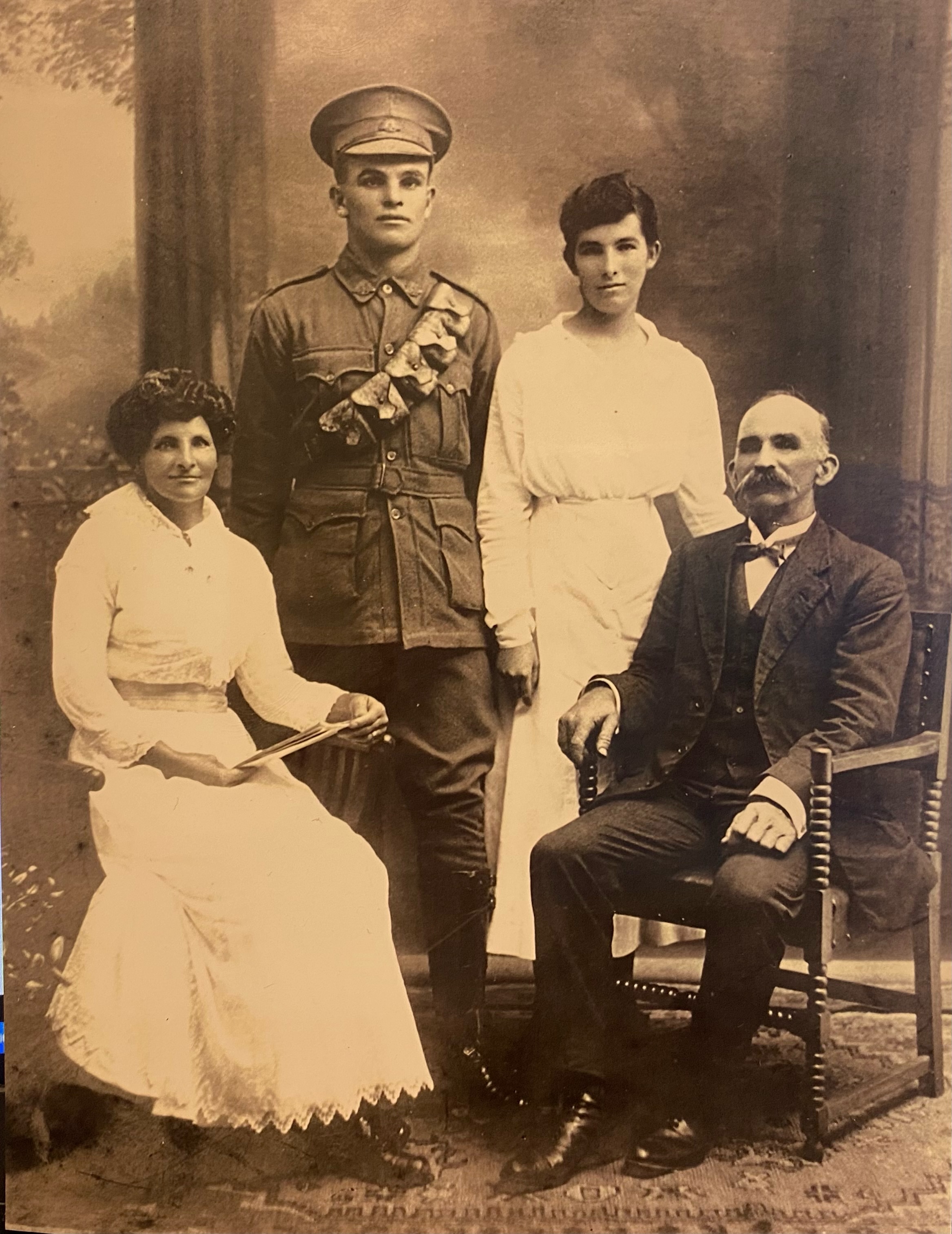
Sarah Duffy (My Nan's grandmother), Jack Duffy, Elvy Duffy (My Nan's Mother) and John F Duffy (Nan's grandfather).
Mona Vale Orchard
He was also an orchardist at Mona Vale. Family photos of John Duffy at his orchard:
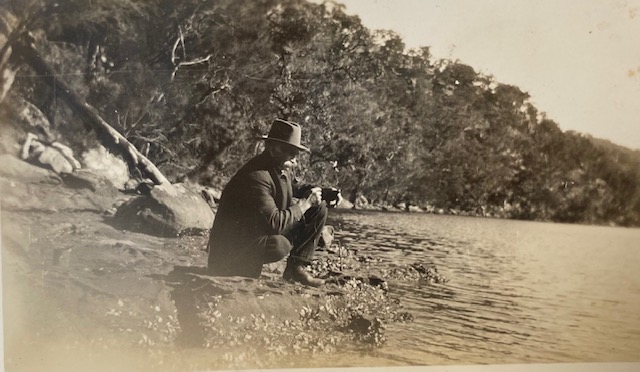

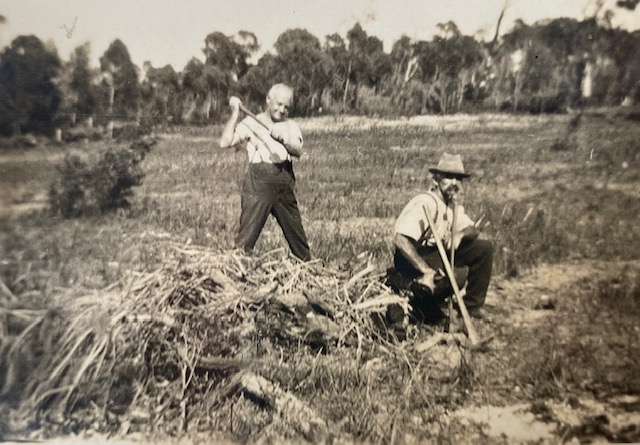
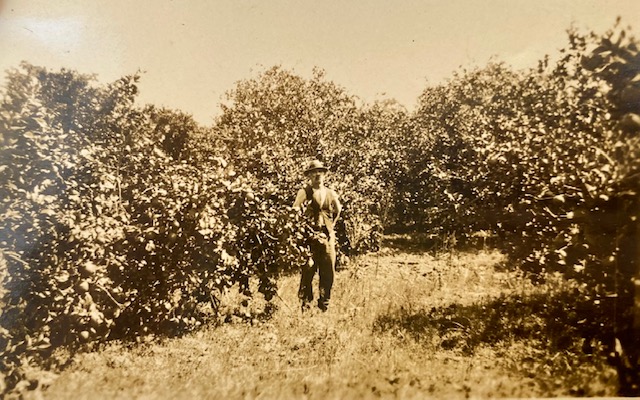
Insights courtesy of and retrieved from; https://belistrophic.blogspot.com/2019/11/family-tree.html
No. 14,573. APPLICANTS:—Sarah Martha Duffy and John Frederick Duffy, Mona Vale, Pittwater. LAND:—Shire Warringah, parish Narrabeen, county Cumberland, 5 acres 1 rood 24 perches in Emma-street and Lane Cove Read, near Turimetta, being lot 20, section A, Collingwood Estate, and part 115 acres 2 roods (portion 53) granted to Thomas Collins; adjoining the properties of J. F. Duffy and J. Mcintosh. NOTICE UNDER REAL PROPERTY ACT. (1907, February 20). Government Gazette of the State of New South Wales (Sydney, NSW : 1901 - 2001), p. 987. Retrieved from http://nla.gov.au/nla.news-article226577683
This holding had originally been part of the Collingwood Estate land sales.
See: Pittwater Roads II: Where The Streets Have Your Name - Warriewood
Primary Application - Sarah Martha Duffy & John Frederick Duffy Emma Street & Lane Cove Road near Turimetta Shire Warringah Parish Narrabeen Volume 1832 Folio 182. Contents Date Range: 06-11-1906 to 26-11-1907
.jpg?timestamp=1727991480886)
.jpg?timestamp=1727991555591)
and:
.jpg?timestamp=1727992010240)
.jpg?timestamp=1727992050483)
.jpg?timestamp=1727992099741)
Thomas Collins’ 55 acres, just north of the bridge over Narrabeen Lagoon, on the western side of Pittwater Road, was conveyed to F.C. Hedemann on 26 November 1883 for £460. [LTO Book 280 No. 742] The bridge was constructed at this time, which enhanced the value of the land.
Collins’ five grants near Mona Vale Road were conveyed to F.C. Hedemann for a total of £1990-10-0, being £20 deposit, previously paid at Collins’ Narrabeen house at 10.30 a.m. on 7 April 1883 [LTO Book 280 No.486], and £1970-10-0 on 3 December 1883. [LTO Book 280 No. 741] - Collingwood Estate
A Sale Note was also made on 3 December 1883, Hedemann agreeing to purchase J.T. Hughes’ grant on Mona Vale Road for £350, “Mr. Collins to endeavour to find the title deeds within two years”, or the sale would be void. [LTO Book 280 No.487] The sale went ahead on 13 November 1885. [LTO Book 328 No.171] - Collingwood Estate
Collins sold Rhodes’ grant, the site of Narrabeen High School, to Manly builder James Blair on 30 September 1886, for £900. [LTO Book 349 No.730]
Collins contracted to sell Lees’ grant, which formed part of his own farm at North Narrabeen, to John George Cousins of Manly for £30 per acre on 3 May 1886. [LTO Book 337 Nos 584] Cousins paid a deposit of £250 but the contract was cancelled on 15 June 1891, Cousins then owing Collins £233-9-5 for interest and his costs. [LTO Book 482 No.376] Collins applied to have two grants (Schaffer’s, granted in the name of Robert Stewart, and Lees’, granted in the name of Capper Pass) brought under the Real Property Act, and a Certificate of Title was issued to him on 15 June 1892. [LTO Vol.1060 Fol.211]
The farm was sold to Edward Augustus Macpherson on 20 March 1895. It was finally subdivided and sold by Sir Allen Taylor, timber merchant, in 1912.
Thomas died at his Manly home, “Addiscombe” on 6 June 1897. He was 82 years old, although his gravestone in Manly cemetery wrongly states that he was aged 94.
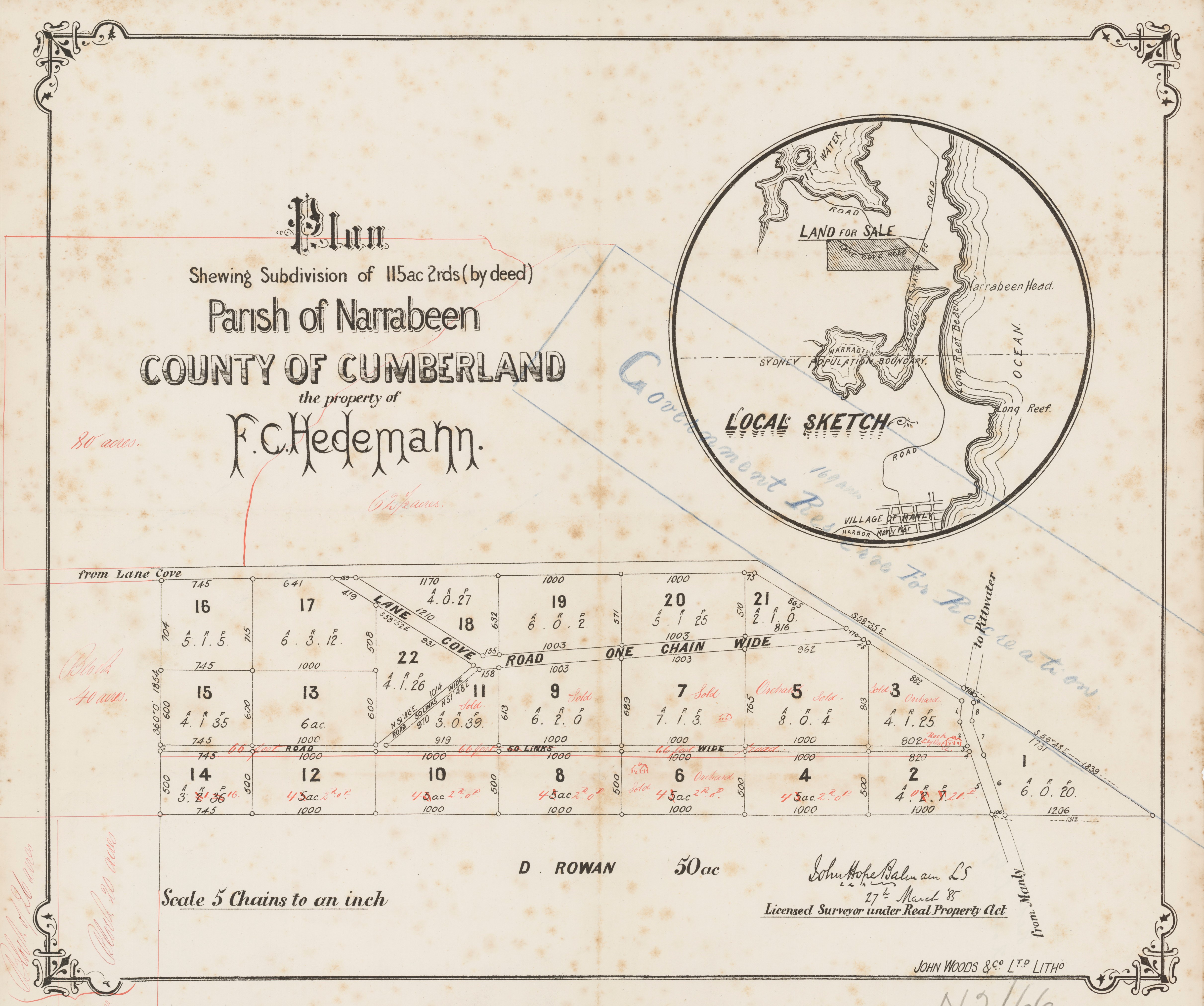
Plan shewing subdivision of 115 acres 2rds (by deed), John Hope, Balmain Surveyor, surveyed 27th of March 1885. Parish of Narrabeen - The Property of F. C. Hedemann. Item No.: c050370068
Collingwood, meaning "wood of disputed ownership" (from Middle English calenge ‘dispute’, ‘challenge’). In this instance, perhaps a reference to Thomas Collins, the owner prior to Frederick Caesar Hedemann.


Richardson & Wrench & Balmain, John Hope & John Woods & Co. (February 12th 1886). Collingwood Estate, Parish of Narrabeen, a few miles from Manly, at the corner of Pittwater Road & Lane Cove Road 30 choice blocks from 3 to 7 acres each : at the rooms Pitt St., Friday, 12th Febry. 1886, at 11.30 Retrieved from http://nla.gov.au/nla.obj-230339763 - and section from showing Herbert Street and Emma Street.
John Frederick DUFFY
Regimental number: 36604
Place of birth: Thornleigh New South Wales
Religion: Church of England
Occupation: Orchardist
Address: Mona Vale, Pittwater, Manly, Sydney, New South Wales
Marital status: Single
Age at embarkation: 21
Next of kin: Father, John Frederick Duffy, Mona Vale PO, Manly, Sydney, New South Wales
Enlistment date: 1 November 1916
Rank on enlistment: Driver
Unit name: Field Artillery Brigade, Reinforcement 29
AWM Embarkation Roll number: 13/128/2
Embarkation details: Unit embarked from Sydney, New South Wales, on board HMAT A15 Port: Sydney on 5 November 1917
Rank from Nominal Roll: Bombardier
Unit from Nominal Roll: 1st Divisional Ammunition Column
Fate: Returned to Australia 16 June 1919
The party then boarded the cars again, and a visit was paid to Narrabeen. Afternoon tea was served by the local ladies, and further speech-making followed. Mr. A. Ralston(president) presided. Mr. Stuart Robertson, M.L.A., proposed "The Shire of Warringah and District." Dr. R. Arthur, M.L.A., followed, and the toast was responded to by Mr. A. Ralston (president Warringah Shire), Mr. Gordon (president Narrabeen Progress Society), and Mr. Duffy (president of the Mona Vale Progress Association).
The toast of "The Visitors" was proposed by Councillor Holden, and responded to by Mr. Hughes, M.P., Mr. J. Hepher, M.L.C., and Mr. Briner, M.L A.
Mr. Hughes, in the course of his remarks, regretted that in connection with the Federal capital Sydney and its environs had been banned by the 100-mile limit, as places within that radius were by beauty and suitability justly entitled to have it.
A visit was then paid to Queenscliff and Freshwater, and the various beauty spots admired.
In the evening a complimentary social was tendered Dr. Arthur in the Victoria Hall, Manly. A programme of musical items was submitted, and at the close, on the motion of Mr. Mark Mitchell, seconded by Mr. F. Trenchard Smith, a vote of thanks was accorded Dr. Arthur for the work he had done for the electorate since his entry into politics. The remarks of the speakers were supplemented by Mr. Henley, M.L.A., and Colonel Ryrie, M.L.A. Dr. Arthur responded. AUSTRALIA'S PLAYGROUND. (1908, October 19). The Sydney Morning Herald (NSW : 1842 - 1954), p. 8. Retrieved from http://nla.gov.au/nla.news-article14990032
Warringah Shire Council Records: from Minutes of Meetings:
3/3/1919: 1. That the Engineer prepare an estimate for repairing and painting the fence round Mona Vale Park; Counoillor Sturman seconded. Carried. "That the Engineer furnish an estimate for completing cutting in Bilgola Road, Newport, and connecting same with Gladstone Street" Seconded by Councillor Duffy. Mona Vale Beach Resolved, - (on the motion of the President) That £5 be voted for clearing of any the ti-tree to open up the view of Mona Vale Beach.
23/8/19, re Honorary Rangers under Birds & Animals Protection Act ; Resolved,(Councillor Sterland, Councillor Thew) That the Engineer and Sanitary Inspector be nominated as Honorary Rangers for the Shire; Councillor Atkin for Narrabeen; Councillor Rose for and Councillor Duffy for Mona Vale - That an advertisement be inserted in the local papers notifying that the Shire is now a Bird Sanctuary.
WEDDING BELLS
DUFFY-WHITE.
On Saturday, 19th instant, at St. St. Jame's Church, King-street, Sydney, the pretty wedding of Miss Rita Florence White, only daughter of Mr. and Mrs. Frederick White of Manly, (late of Parramatta), and Mr. John Frederick Duffy, only son of Mr. and Mrs. Duffy of Mona Vale, Manly, was solemnised by Rev. J. Russell. The church was beauty-fully decorated with choice white blooms, and the guest pews tied with true lovers knots. The organist pre-sided at the organ, and during the signing of the register, "Beloved it is Morn,', was sung by Miss Kathleen Lovell (cousin of the bride).
The bride who was given away by her father wore a beautiful scintillating bridal gown of ivory georgette over silver tissue, with underskirt of jewelled embroidery. The court train was of pink tulle and ninon, draped with silver lace, held in place by clusters of silver roses. With her tulle veil, she wore a band of silver tissue and trail of orange blossom. Her bouquet of roses and carnations with tulle and silver streamers, and a cheque were the gifts of the bridegroom. Two brides-maids were in attendance, Misses Louie Flook (bride's cousin) and Elvie Duffy (bridegroom's sister), prettily and effectively frocked respectively in shaded mauve, and champagne pleated , crepe de chene, worn with hats to match; their bouquets to tone and gold armlet and diamond brooch were the bridegroom's gifts. Mr. Ritchie White (bride's brother) was best man, and Mr. Stan White (bride's brother), grooms man. Mrs. White (bride's mother) wore orchid mauve floral georgette, over brocaded tissue, and large crinoline hat of fuchsia shade. She carried a posy of pansies, red roses and lavender. Mrs. :Duffy (bridegroom's mother) black morocain, trimmed with white pleated georgette, black hat. Her posy was of scarlet roses. After the ceremony a reception was held at Sargent's, Market-street, about 100 guests being present. Mr. P. Winston presided, and the usual toasts were honored. Later Mr. and Mrs. J..P. Duffy left for the Jenolan Caves, where the honeymoon is being spent. WEDDING BELLS (1925, December 23). The Cumberland Argus and Fruitgrowers Advocate (Parramatta, NSW : 1888 - 1950), p. 4. Retrieved from http://nla.gov.au/nla.news-article103769683
MONA VALE SCHOOL.
Writing to the Editor, Mr. D. J. Duffy says that the Mona Vale Public School has no permanent water supply. The children at the school are compelled at times to drink putrid water, caught in tanks and drained from the roof, where many birds lodge, or to carry their supply-from their homes. MONA VALE SCHOOL. (1927, December 14). The Sydney Morning Herald (NSW : 1842 - 1954), , p. 17. Retrieved from http://nla.gov.au/nla.news-article16426462
J. F. Duffy is listed as a contractor in local Mona Vale Dunn's magazine lists. One contract:
In connection with the £3,000 grant received for the new Colo River bridge and approaches, it was announced at Monday's meeting of Colo Shire Council that council's acceptance of the tender of Messrs. J. F. Duffy, H. E. Solomon and G. L. Solomon, of Mona Vale, at £1779/19/- for the structure, on condition that the contractors employed 90 per cent local labor through the local labor bureau, had been approved by the department, as also had been the plans, and specifications for the work. The approaches and other work specified will be done by the council staff, and it was expected that operations, both on the bridge and approaches, would begin on Monday last, May 13. WEEK TO WEEK. (1935, May 17). Windsor and Richmond Gazette (NSW : 1888 - 1954), p. 4. Retrieved from http://nla.gov.au/nla.news-article85795072
John Frederick Duffy - Date of Death 05/02/1950, Granted on 05/06/1950. Place: Mona Vale, Remarks: Occupation: Retired Orchardist
John Frederick Duffy (son) - Date of Death 22/01/1982, Granted on 22/04/1982
Not to be confused with:
JOHNSON, John and Edward Brothers John and Edward Johnson travelled as cabin passengers from London on the Renown, arriving in Sydney on 24 June 1831. [AO COD 24] Their mother was Frances Johnson, who had been transported as a convict on the Lord Melville in 1817. In the 1822 General Muster she was listed as wife of J. Foster, Sydney, while the entry under John Foster stated that he came free on the Surry, and was an Ordinary Constable, Sydney. The couple had two children, William aged 4, and Eleanor, aged 1½. In the 1828 census Frances was the wife of Capper Pass, tallow chandler, George Street, Sydney. Her son William Johnson, aged 10, lived with them, while her daughter Eleanor Johnson, aged 7, was “with Wm. Fisher, Hunters Hill”. William Foster, farmer and district constable, whose grant was at present Killara, was meant. Eleanor was shown in 1828 as having her own farm of 10 acres, all cleared and cultivated, with 5 horses and 3 cattle.
John Johnson was issued with a publican’s licence for the Gate Hotel, situated on William Foster’s grant, on 2 July 1832. As the Green Gate Hotel, the licence was renewed on 3 July 1833.
On 25 February 1833 John Johnson married Charlotte Oliver, the daughter of William’s unmarried sister Bridget and her employer, Daniel D. Mathew, an English settler who owned a saw mill in the area. Johnson moved to the new Sawyer’s Arms, a “long slab and bark hut” situated on Henry Oliver’s grant opposite Fidden’s Wharf Road. A publican’s licence was issued to him there from 1834 to 1838, although William Oliver held the licence briefly in 1836 and 1837. [Australian 7 Oct 1836]
Mathew Notes appears in Roads To Pittwater: the Mona Vale Road
In 1839 Johnson moved to the George Inn in Sydney, while the licence for the Sawyer’s Arms was transferred to Daniel Bullock. William Oliver held the Sawyer’s Arms licence in 1840, and Bullock moved to the New Inn, Lane Cove, holding a licence there from 1843 to 1845. Also on 25 February 1833, Charlotte’s mother Bridget Oliver married Daniel Bullock, a sawyer, in a double wedding. They were married by the Presbyterian minister, Dr. J.D. Lang. William Oliver’s other sister, Margaret, married Peter Joseph Duffy in 1836. Duffy was living with Johnson at the George Inn, corner of Market and Castlereagh Streets, when he applied for 40 acres of land in the Parish of Gordon on 29 May 1840. [AO Reel 1121; 2/7846] John Johnson applied for 50 acres of land at the Basin, Pittwater on 27 November 1840, stating his intention of establishing a market garden there. [AO Reel 1146] He did not proceed to purchase, and the 50 acres was sold on 6 April 1842 to James McCawley. [LTO SN75/7]
On 1 January 1841 William Timothy Cape leased McIntosh’s 200 acre grant at present Bayview to John Johnson for £20 per annum. [LTO Book V No.569] John and Charlotte Johnson were living there, with three children, at the time of the 1841 census. They were still there in 1845, when John Johnson, Peter Duffy, and Daniel Bullock were all named as being associated with illegal distilling at McCarr’s Creek. The three were all married to Oliver women.
More in: An Illicit Still at McCarr’s Creek By Shelagh Champion OAM - Issue 67, July 2012



Head of McCarrs Creek, Pittwater, 1879-1892 Image Number; a924967h & a924066h, Courtesy of State Library of NSW.

McCarrs Creek, Pittwater , ca. 1900-1927. Sydney & Ashfield : Broadhurst Post Card Publishers (with original sepia tinge). No. a106169, Courtesy State Library of NSW
John and Charlotte’s children were: John Junior, born 1834; Frances (b.1836, married Richard Augustus Willoughby Green 1858); Henry (b.1840); William (b.1841); Charles (b.1847); Daniel (b.1850); Charlotte (b.1855, died 1875). William was born at Pittwater. The Johnsons had departed from Pittwater by 30 August 1845, when Cape leased the 200 acres to Thomas Johnson Jones. [LTO Book 9 No. 442]
There were two Charles Johnsons on the North Shore. One married Louisa Oliver in 1870 and the other married Elizabeth Henry in 1871. Present indications suggest that Charles the son of John and Charlotte was the one who married Elizabeth Henry, while the other Charles Johnson married Louisa Oliver. John’s brother Edward Johnson was also living at Pittwater at the time of the 1841 census. Records indicate that he had married Esther Browne in 1840. Biographical notes in the Ku-ring-gai Local History Centre state that Edward went to the U.S.A. during the gold rushes there. - From Profiles of the Pioneers in Manly, Warringah and Pittwater, 2013 Revised version. compiled by Shelagh Champion, OAM, B.A.(Lib.Sc.) and George Champion, OAM, Dip.Ed.Admin.



.jpg?timestamp=1728681407485)


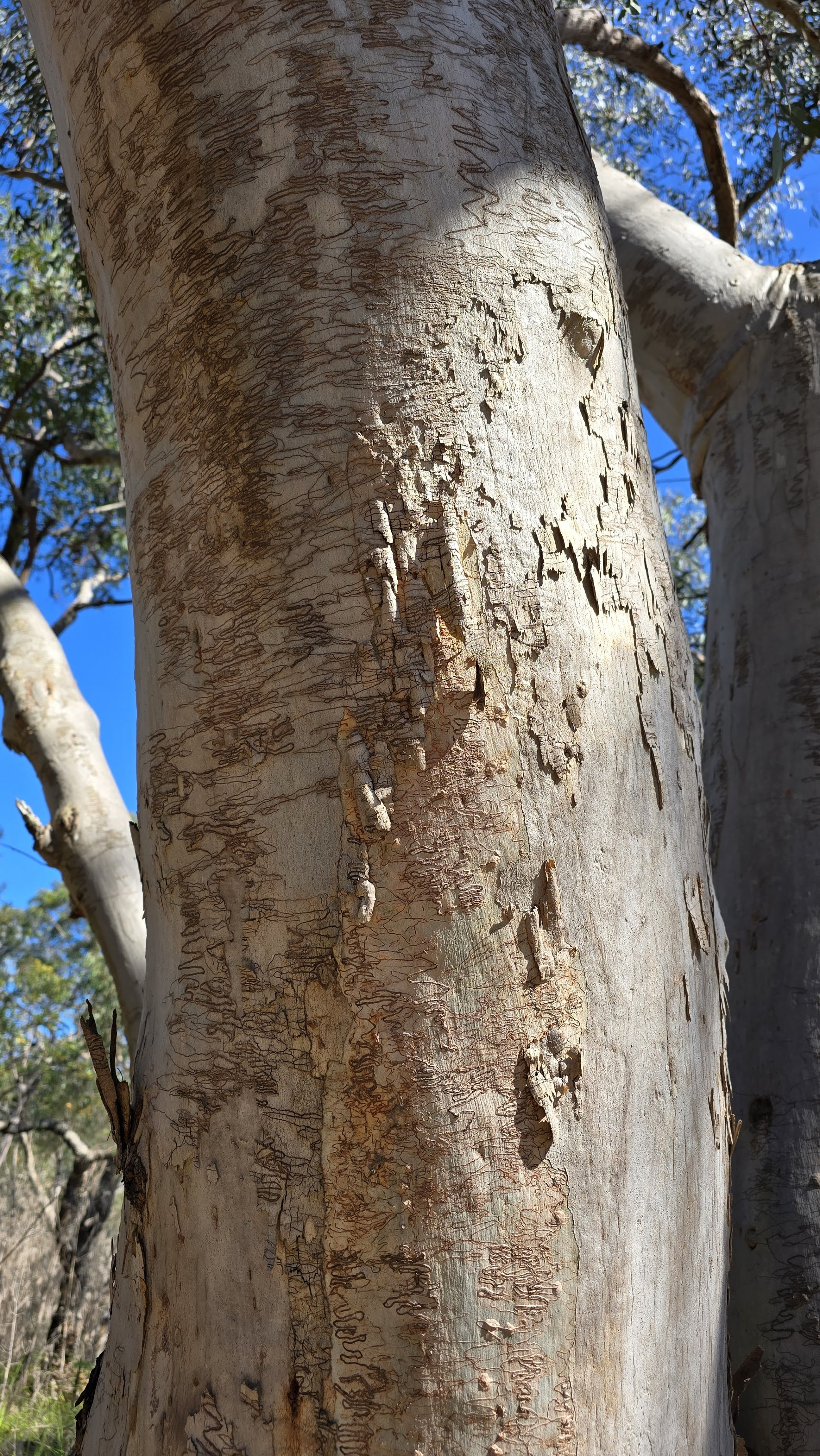





.jpg?timestamp=1728681370954)






.jpg?timestamp=1728681974764)




.jpg?timestamp=1728682109276)




.jpg?timestamp=1728682066929)
.jpg?timestamp=1728682613531)
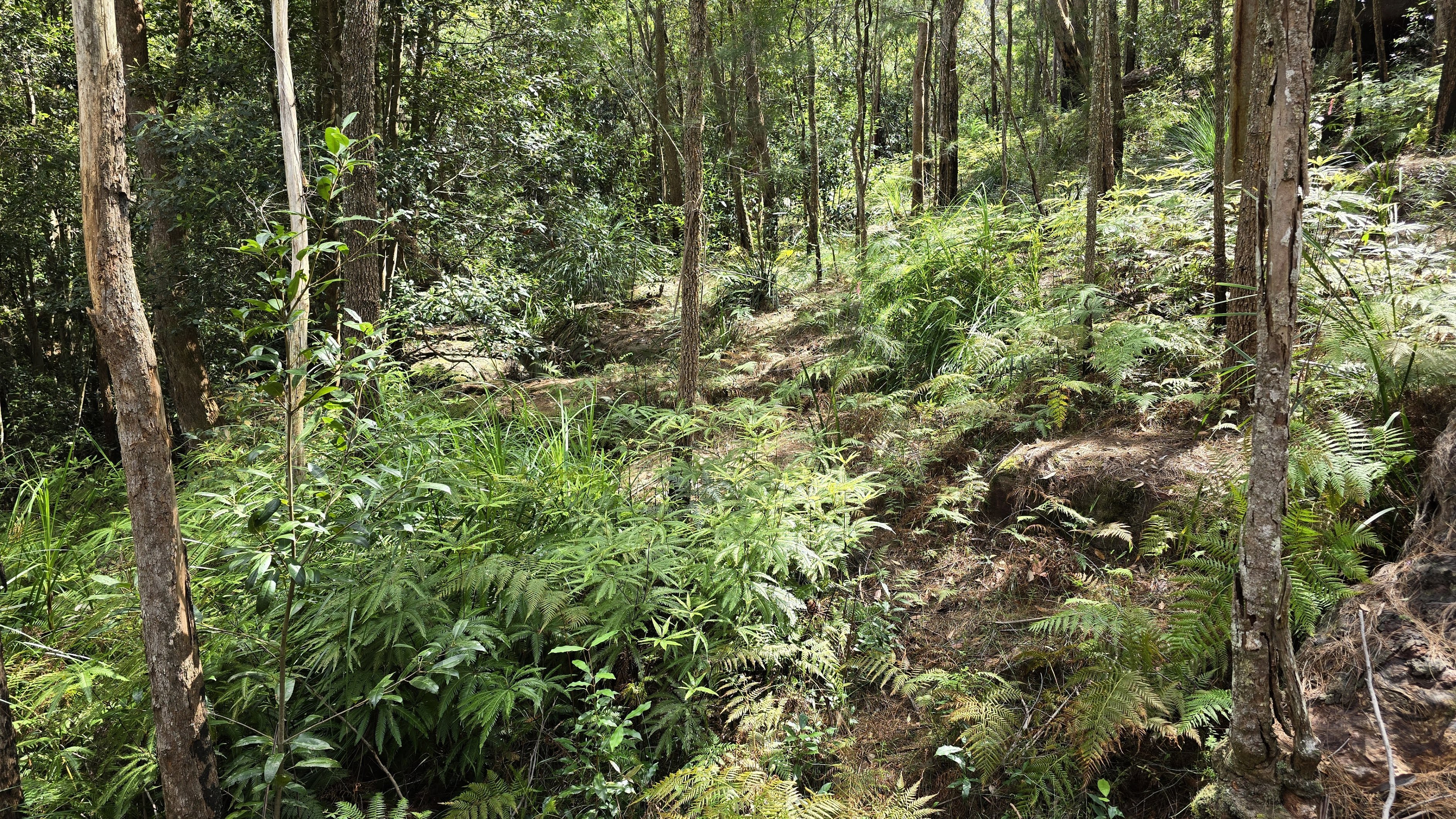
.jpg?timestamp=1728682689964)
.jpg?timestamp=1728682730391)
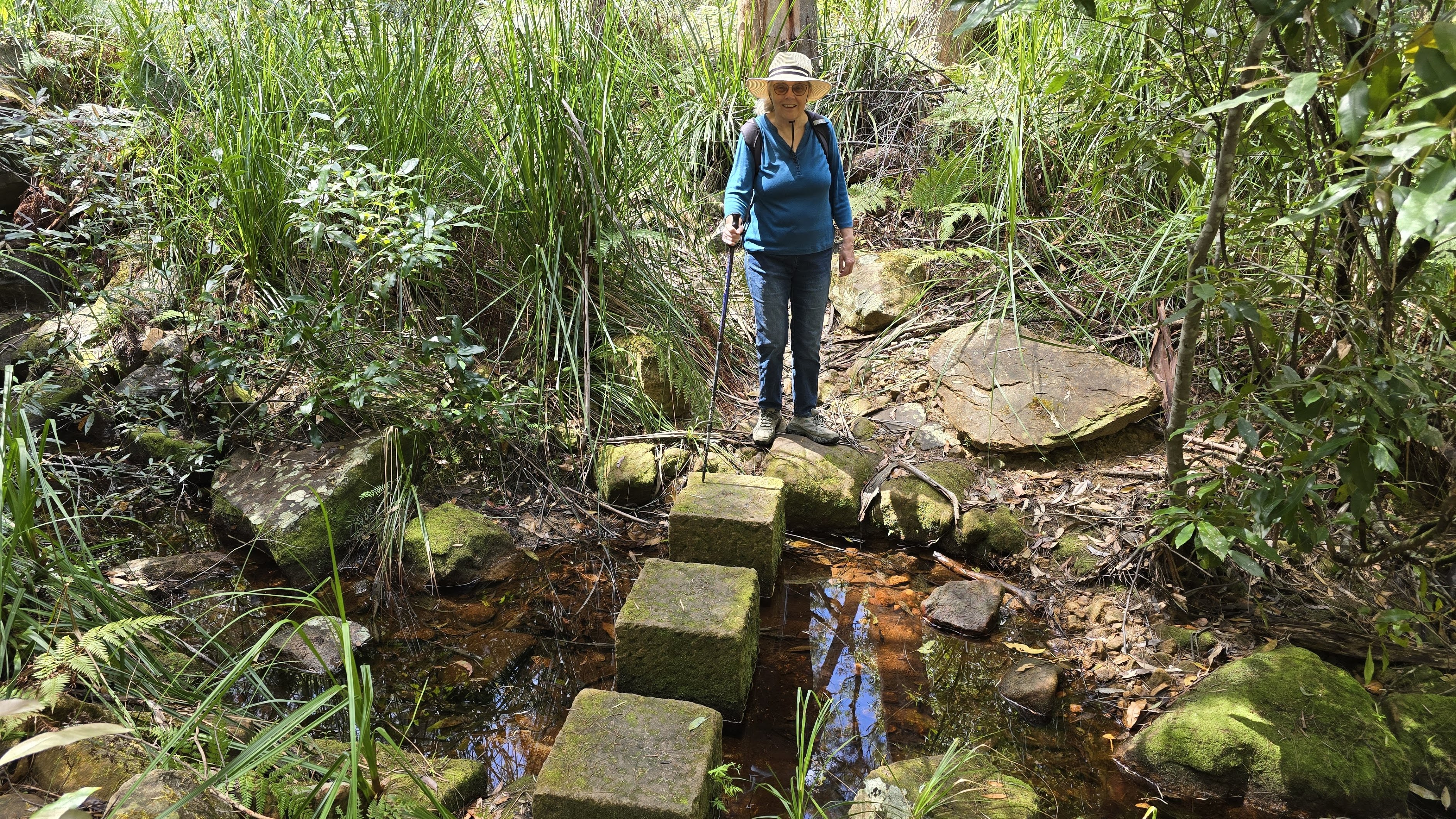

.jpg?timestamp=1728682804816)
.jpg?timestamp=1728682767267)

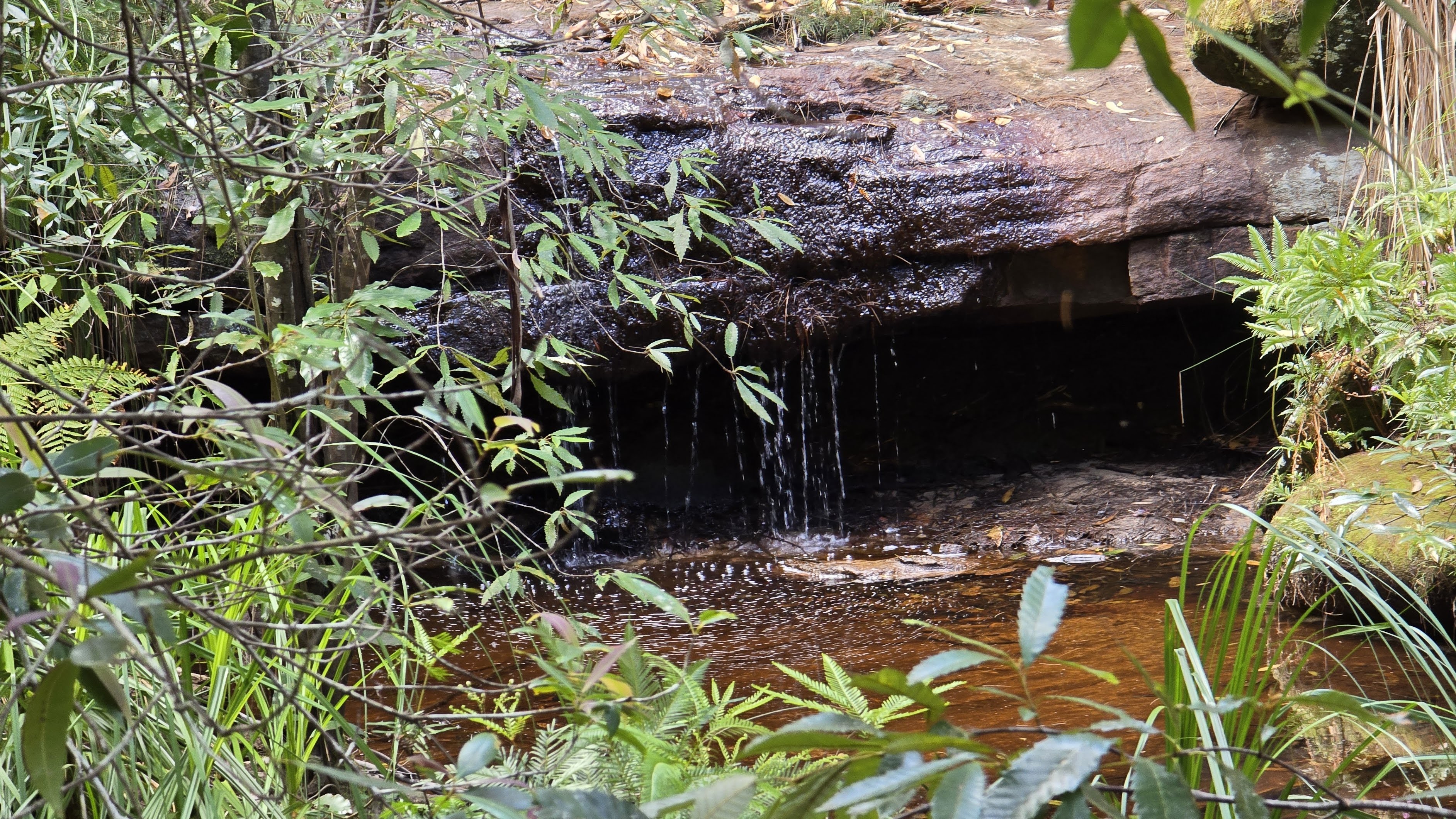
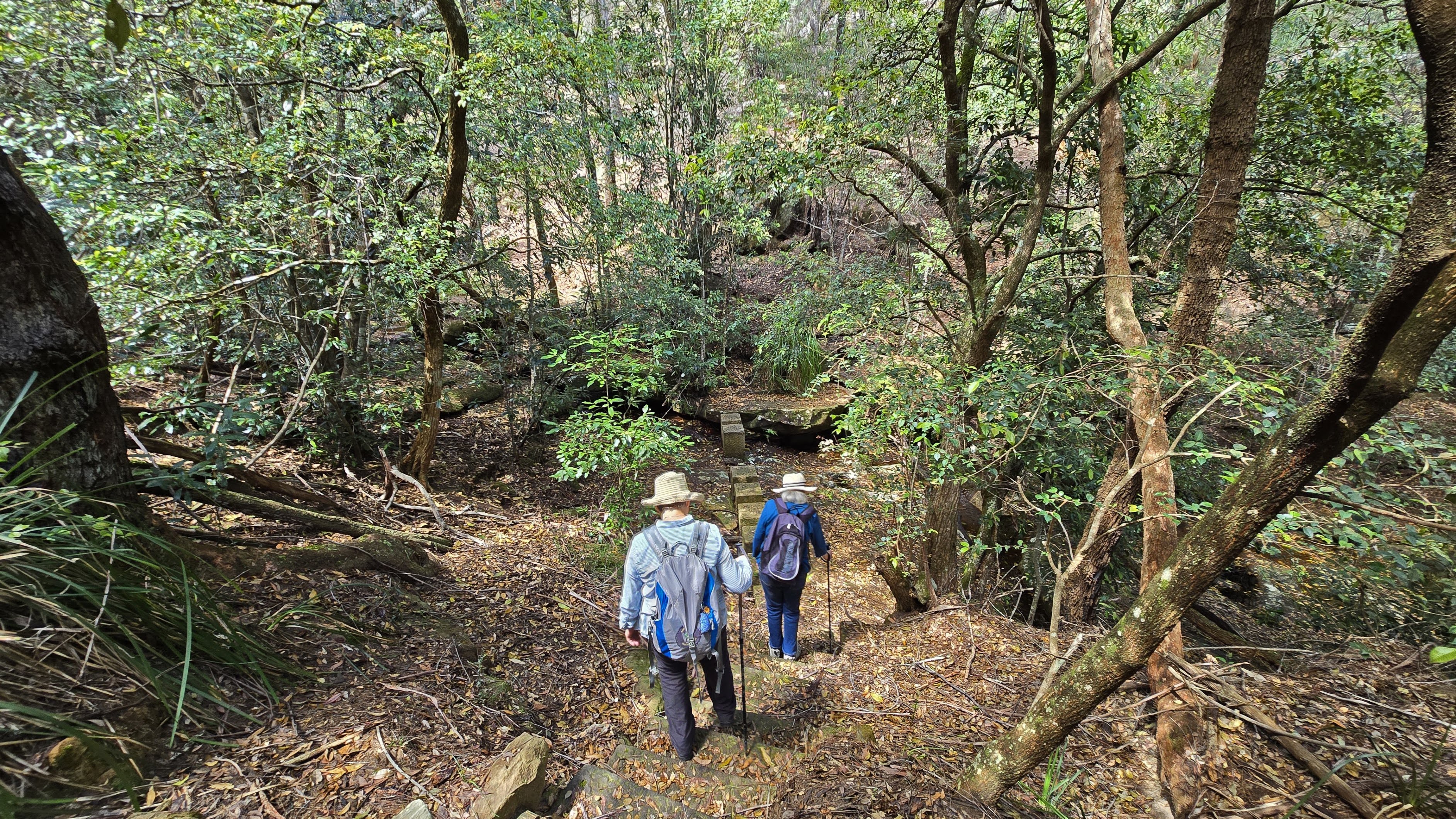



.jpg?timestamp=1728682854490)
.jpg?timestamp=1728682883153)
.jpg?timestamp=1728682960192)


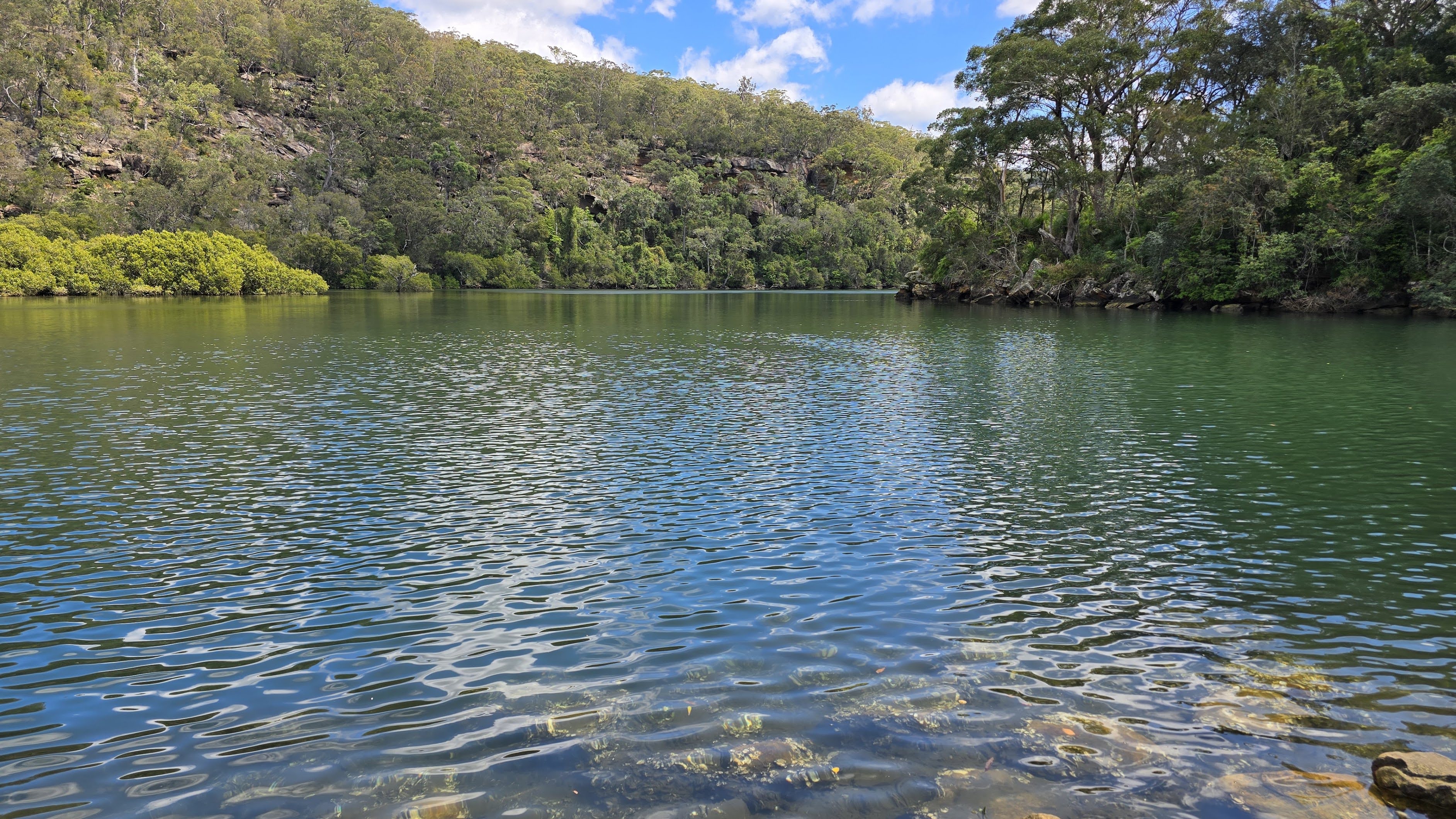



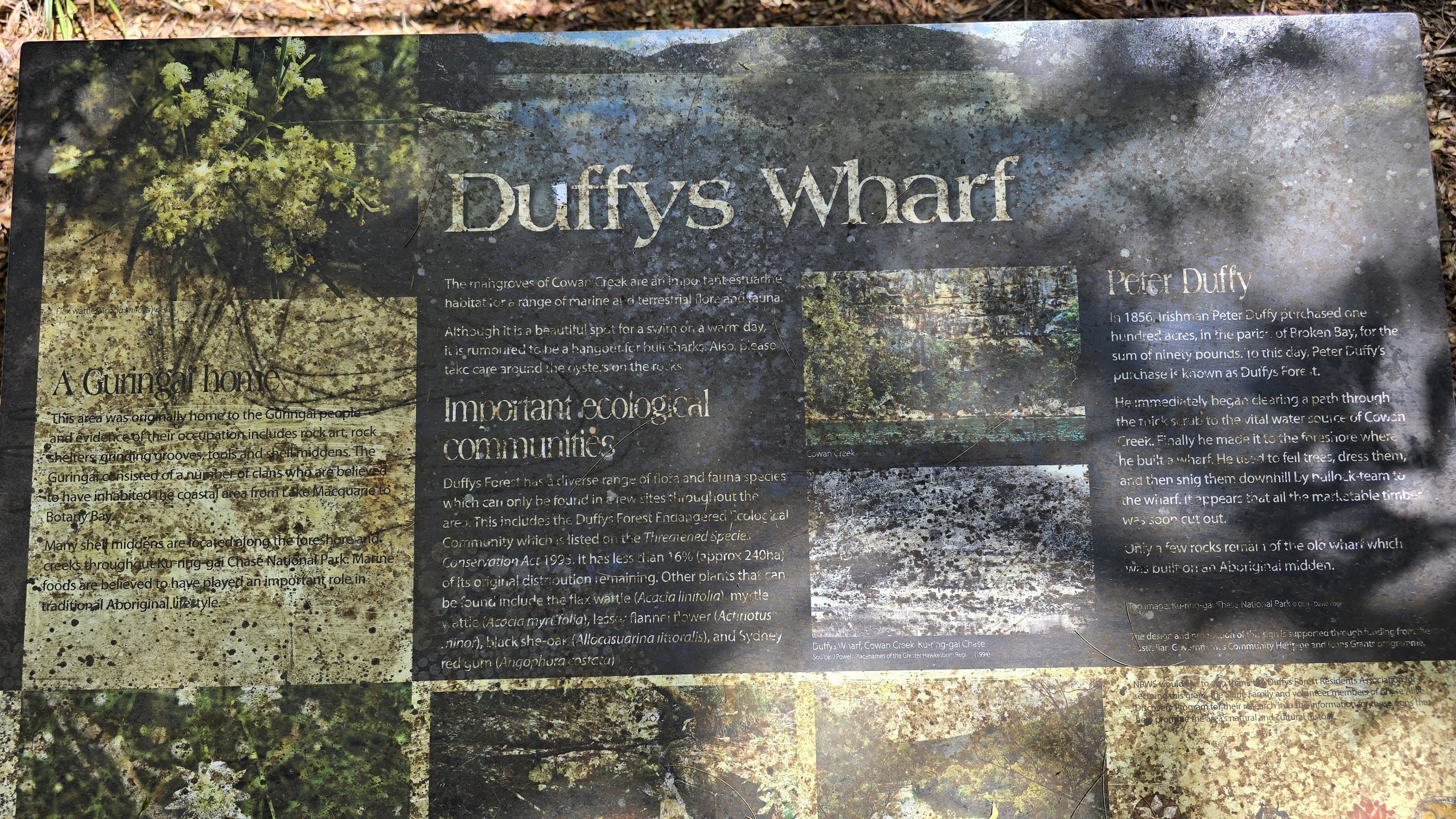
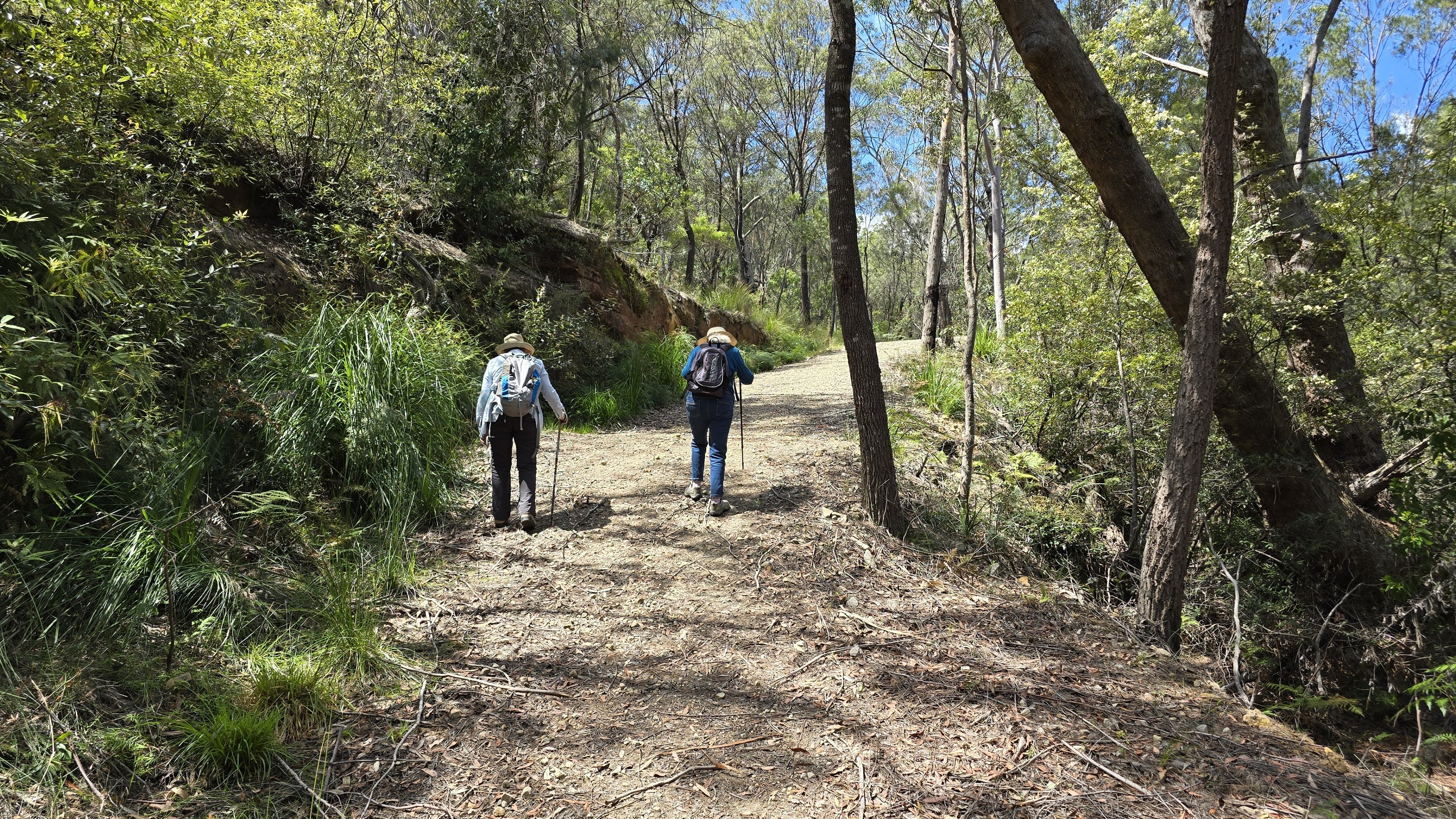

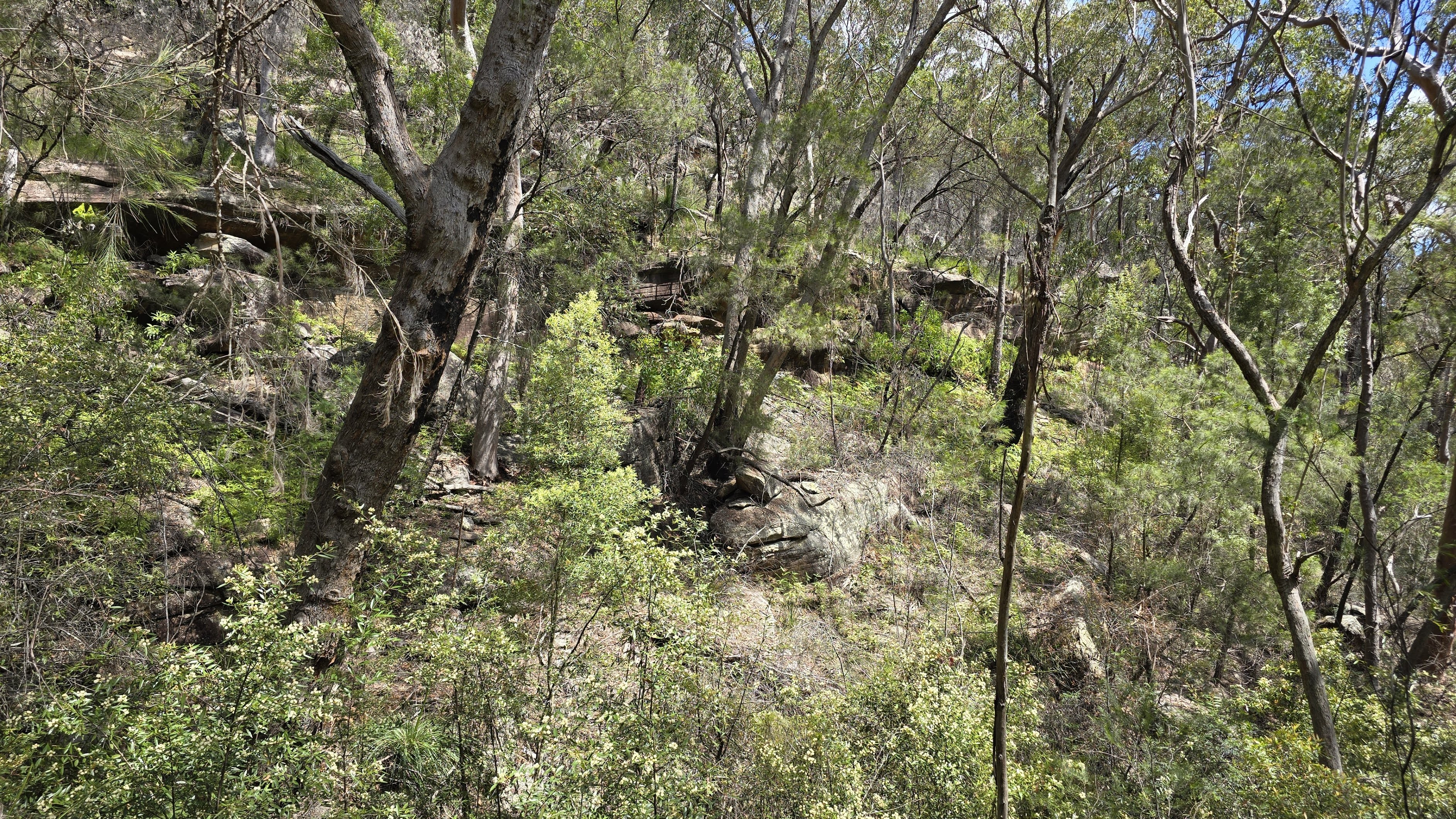

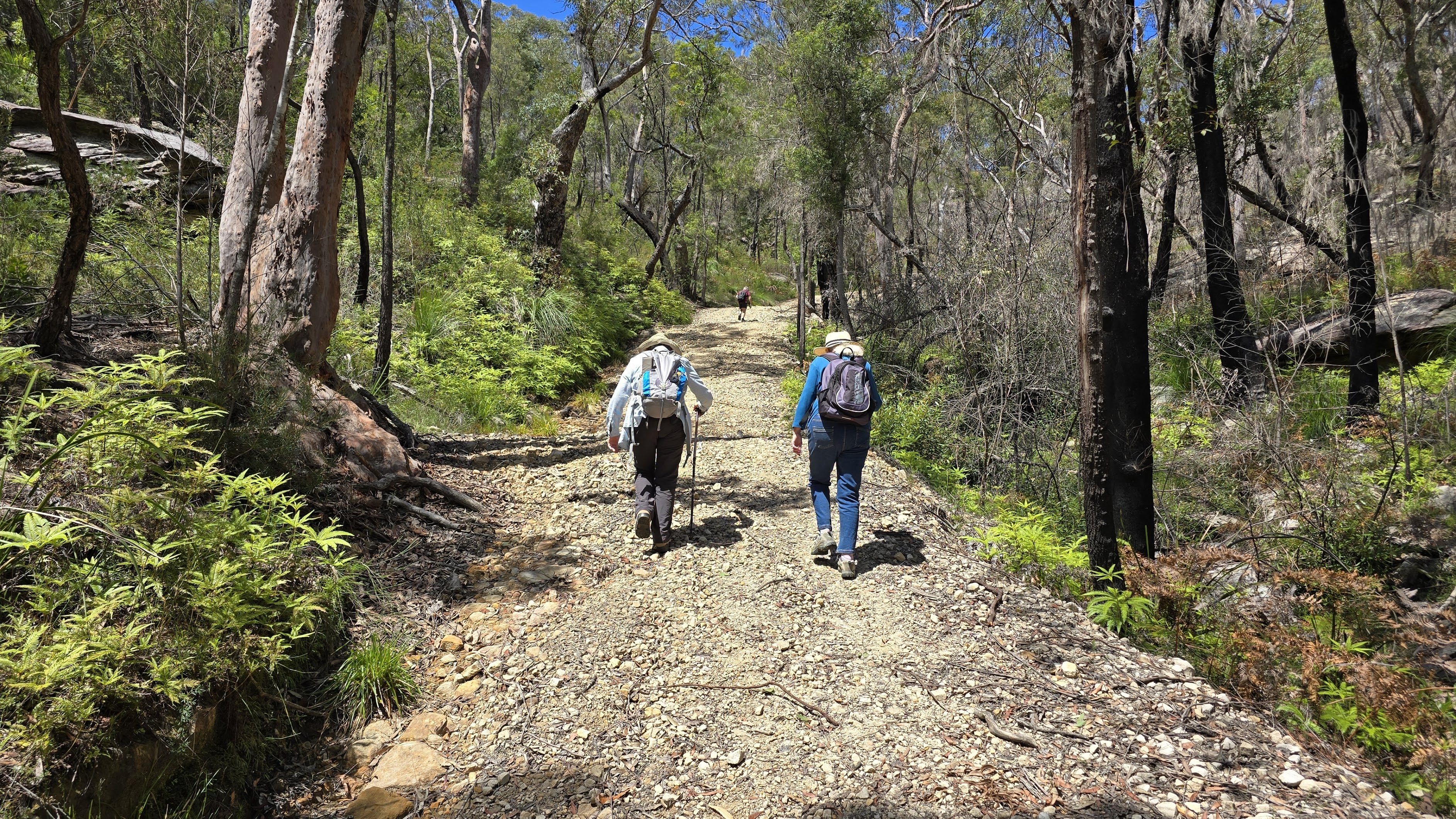



.jpg?timestamp=1728682994863)
.jpg?timestamp=1728683022058)